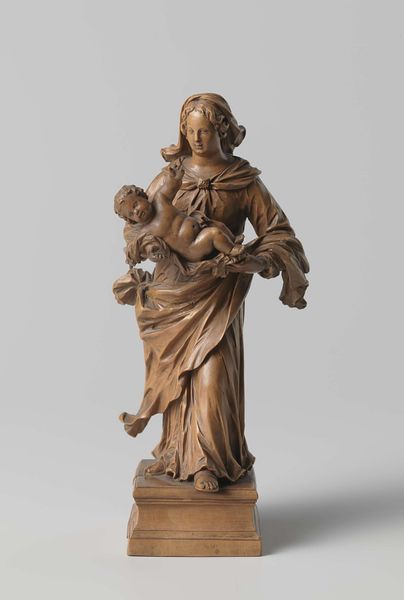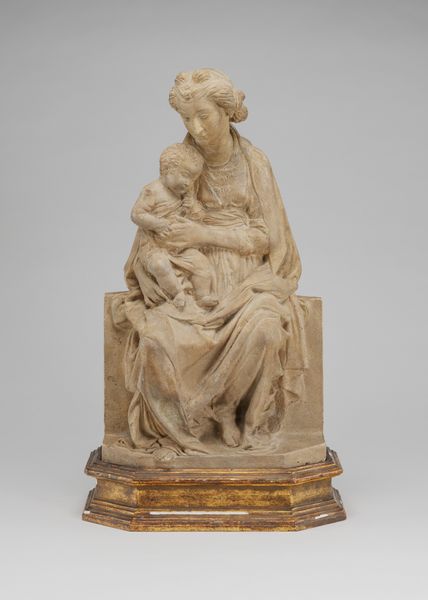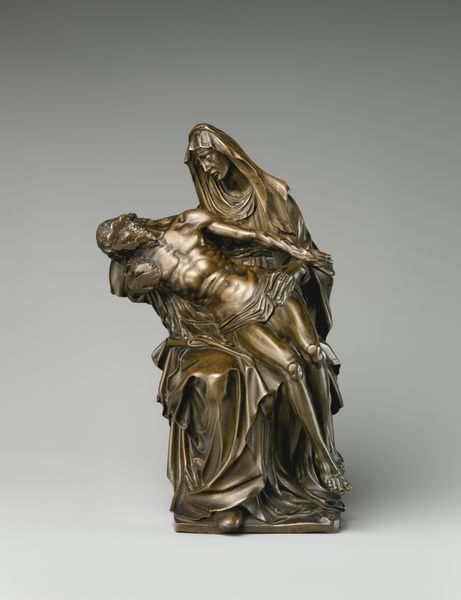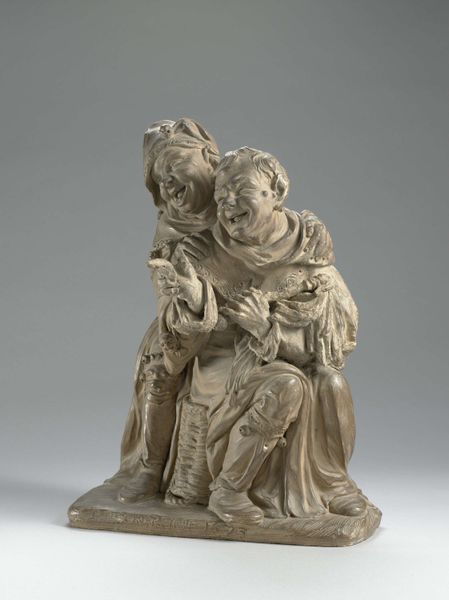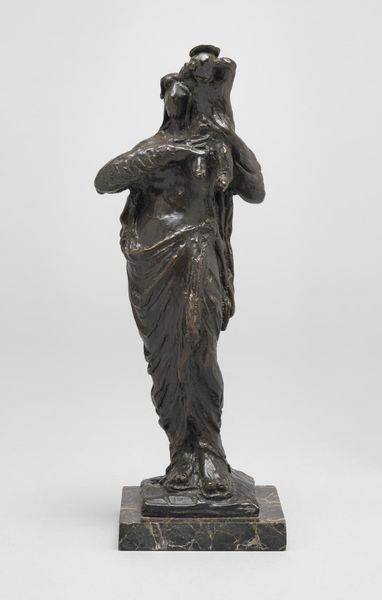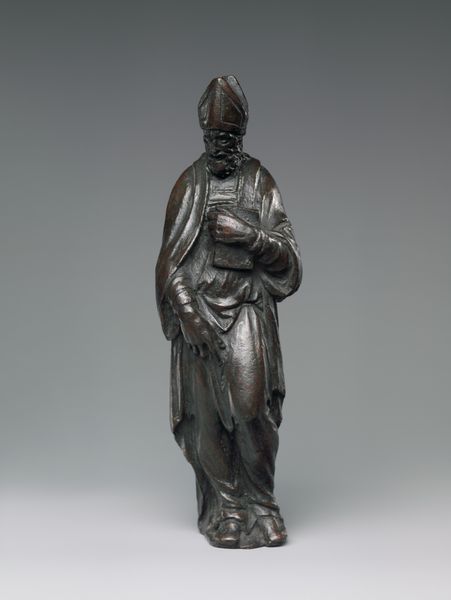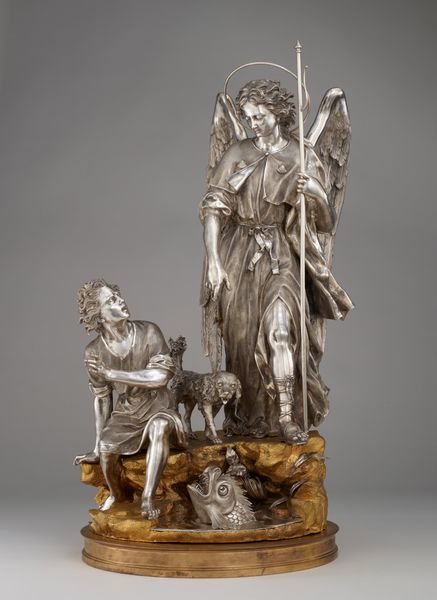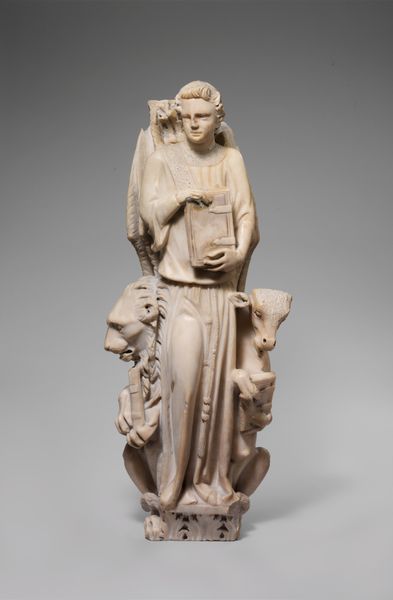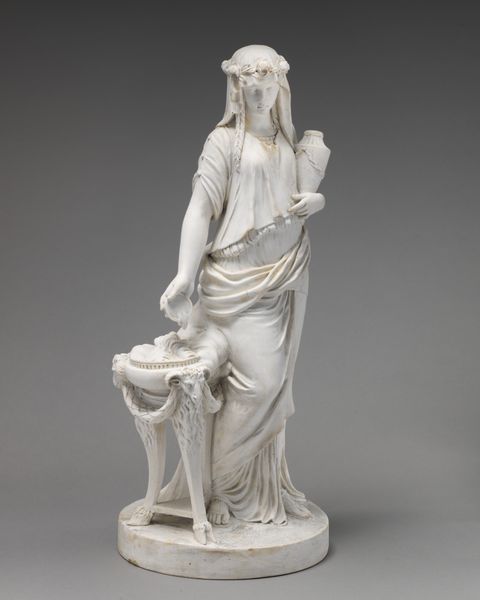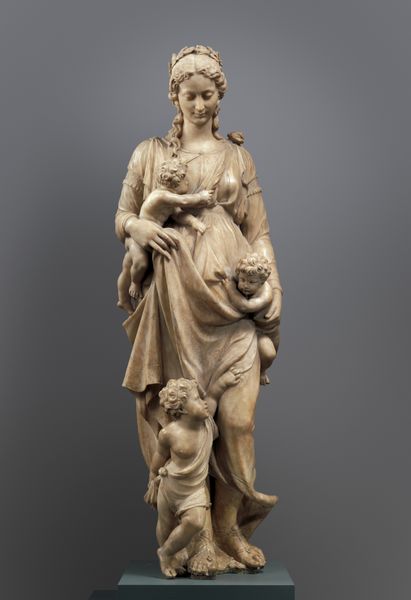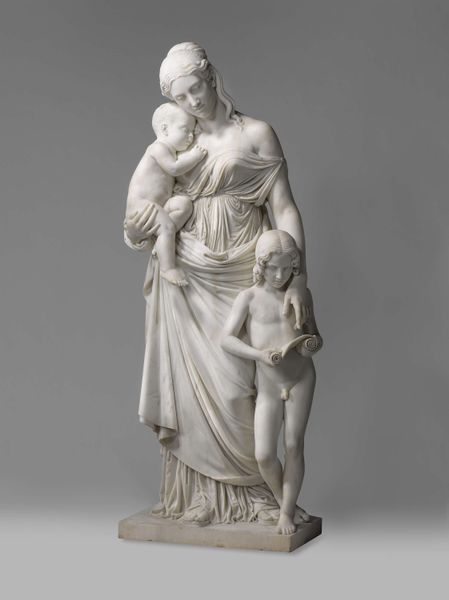
bronze, sculpture
#
portrait
#
sculpture
#
bronze
#
figuration
#
sculpture
#
decorative-art
#
italian-renaissance
Dimensions: Overall (confirmed): 22 1/4 × 9 1/2 × 9 3/4 in. (56.5 × 24.1 × 24.8 cm)
Copyright: Public Domain
Niccolò Roccatagliata created this bronze sculpture of the Virgin and Child in the early 17th century. The statue’s appearance is of course influenced by the inherent qualities of bronze, known for its durability, malleability, and ability to capture fine detail. Roccatagliata would have likely employed the lost-wax casting method, a technique that goes back millennia. First, the artist creates a wax model, then encases it in a mold. Molten bronze is poured in, melting away the wax and hardening into the desired form. The mold is then broken, revealing the sculpture. This complex process has imbued the artwork with social and cultural significance. Bronze casting was a skilled tradition, often passed down through generations of artisans. The ability to manipulate metal in this way required specialized knowledge and a mastery of materials. This sculpture is not merely a representation, but an embodiment of alchemical transformation. By considering the labor, skill, and tradition involved in its production, we come to a fuller understanding of the artwork, challenging traditional distinctions between art and craft.
Comments
No comments
Be the first to comment and join the conversation on the ultimate creative platform.
